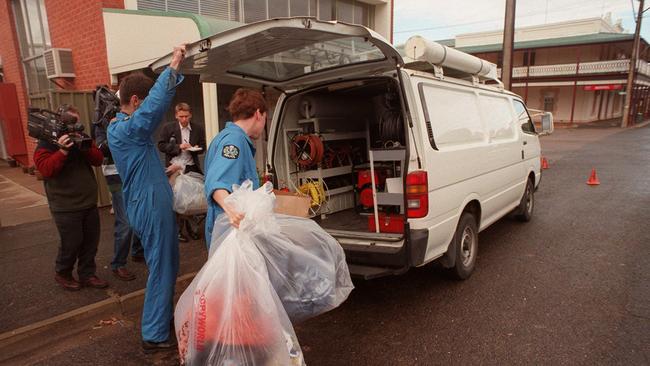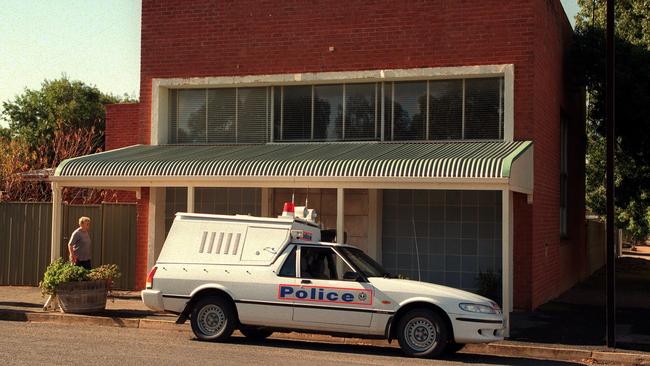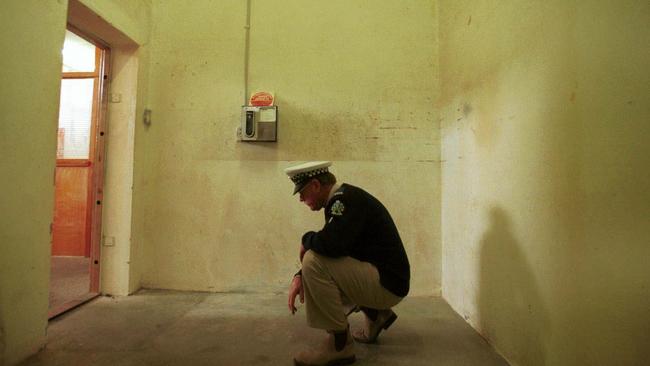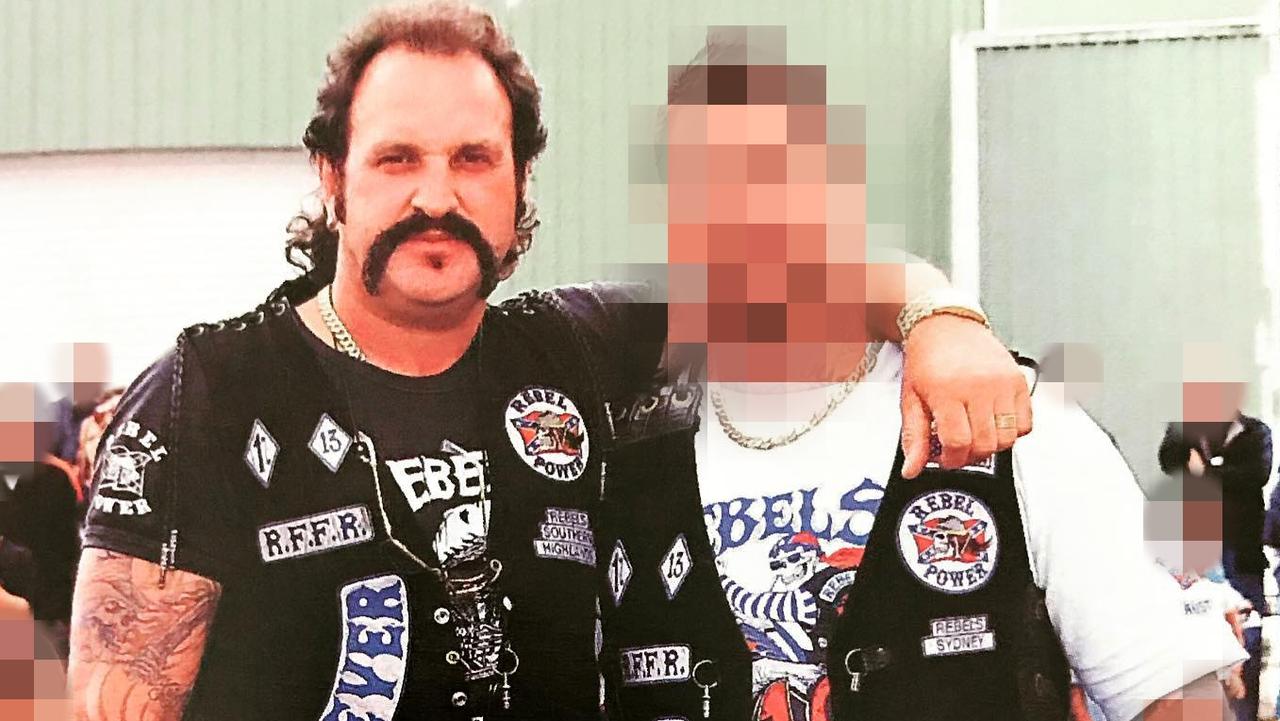Guardians of the Dead: Snowtown, a crime scene in a barrel
How do you deal with a crime scene in a barrel? This was the unique challenge Roger Byard was facing when he was given the grisly job of examining the victims of the Snowtown serial killings. Listen to the podcast.

True Crime
Don't miss out on the headlines from True Crime. Followed categories will be added to My News.
WARNING: This podcast series features graphic descriptions of forensic pathology techniques, and descriptions of violent crimes, accidentsand traumatic incidents that some listeners may find distressing or upsetting.
It was about 9pm on a Thursday night. Forensic pathologist Roger Byard in the middle of his first week on call when the phone rang. It was Paul Schramm, the then-Head of Major Crime with the South Australia Police.
“He just said to me, ‘ah, G’day doc, Paul Schramm here’, Prof Byard explains in a new episode of Guardians of the Dead, a podcast from The Advertiser, True Crime Australia and the University of Adelaide. “I said, oh ‘G’day, how are you?’.
“He said ‘ah, it’s a bit strange really. I’m in this little place called Snowtown in a bank vault and it’s lined by plastic and there are all these barrels.
PODCAST: SNOWTOWN: CRIME SCENE IN A BARREL
Please note: The podcast player is not loading correctly for some app users - if you do not see the player above, please go to this story in a web browser.
“And I said ‘Oh? Hydroponic? He said ‘nah, nah it doesn’t smell like it’.
“He said, ‘well what do I do?’”
“And I said why don’t you take a lid off and if there’s a foot give us a call back? You know, typical black humour. That was the last thing I was thinking.
“About 10 minutes later he phones me back and says ‘there are actually two feet’ and I said you’re kidding me. It was like nothing I’d ever even considered.”
Such was Prof Byard’s introduction to the notorious case, which involved the depraved killings of 11 people by John Bunting, Robert Wagner and James Vlassakis between 1992 and 1999.
Eight bodies were found inside six acid-filled barrels inside the disused bank vault at Snowtown, a tiny town about 150km from Adelaide.
In the days ahead, two more bodies would be found buried in the backyard of Bunting’s former house in Salisbury North, while another victim, whose body was found by a farmer at Lower Light in 1994, was also linked to the killing spree.
By Friday morning, the barrels had been transported to a forensics facility in the city, where Prof Byard and his colleagues faced the grim task of trying to identify the victims, while at the same time trying to find clues that might help authorities understand exactly what had happened.
“We were wandering around with question marks over our heads because we had no idea,” Prof Byard says. How did it happen? Why? Who are these people? That’s the process to go through in a very methodical fashion.”
Before that process could begin, however, the team faced a more practical problem.
Were the barrels dangerous?
“We thought, well, if they’ve used some sort of horrible chemicals to dissolve the bodies, then that could be a danger,” Prof Byard says.

“So we undid one of the barrels and took some samples and that was analysed and it really wasn’t much. They’d used acid but because they hadn’t used enough it had neutralised, so basically there was no toxic chemical danger.
“But then we had to work out how do you empty barrels? What’s in there? How do you do it without losing evidence?”
As Prof Byard explains, while the bank vault and backyard at Salisbury North were critical to the investigation, one of the most important crime scenes was in front of them, inside those barrels.
“It was surreal because we didn’t know what might be in there. So we just worked barrel by barrel, sieving the remains, looking into the sieve to see if there’s anything there and then bringing the remains out onto tarpaulins and photographing them and looking for thumb locks that were found and gags, ligatures that sort of thing. And then once they were out and in body bags, we could then process them as cases in the coming days.”

But while DNA evidence might usually play a key role in helping to identify victims in other cases, in this case, it was practically useless.
“Everybody thinks that DNA is the bee’s knees. But the problem was the DNA had been affected by the storage, so it didn’t work. And people were saying, well you know, you can identify dinosaurs from DNA, why can’t you identify these people? But it’s a different.... it’s a moist, initially acid environment so it breaks the DNA down.
“So that wasn’t particularly useful, but there were tattoos, also there were missing people the police had been following for quite a while, so they knew who was possibly there.
“Stature, dental work, teeth are very important because everybody has unique fillings and unique teeth. So they were the major identifiers and the people were identified.”

Asked whether anything particularly surprising came out of the forensic investigation, Prof Byard says, simply, “the whole case”.
“As it evolved through the courts, and we found out what these people had been doing to them, the torture and just the depravity of it….
“A lot of what happened we didn’t find at autopsy because the tissues were decomposing but in the court it came out that they’d been crushing toes with pliers, they’d been electrocuting them, they’d been using cigarette burns, they’d been putting sparklers into their genitals. Really, really evil stuff.”
Prof Byard says he was largely able to remain distracted from the horrors of the case but in quiet moments, it extracted its toll.
“I’d been at the Women’s and Children’s doing paediatric pathology and then I’d moved to this.
“So about 4 o’clock in the morning, Saturday morning, I just sat bolt upright in bed, looked at the dog, she was sleeping on the floor and said ‘what have I done?

“I went and got a coffee and just sat there and thought about it and it was just so confronting.
“There’ve only been a couple of instances in my professional life where I’ve had nightmares about cases. And this one I had nightmares for probably three or four nights, which just shows you the impact that it had.”
In 2002, after the longest criminal trial in SA history, Bunting was finally convicted of 11 murders, while Wagner was convicted of 10.
James Vlassakis, who agreed to act as a prosecution witness in the trial against the three others who were charged, was jailed for at least 26 years after being convicted of four killings.
Asked for his prevailing memories of the case over two decades, Prof Byard says “oh I don’t know, just a sense of sadness and pointlessness and how horrible it was.
“I think it was handled very well from the police side, forensic science side and forensic pathology. We were very systematic about it, you know, we didn’t miss anything.
“But the thought of it happening again is not a pleasant thought.”



